As 3D printing moves from a prototype technology to a manufacturing process, the methods that can produce more parts and faster are moving into the stoplight. Although most 3D printing service providers today rely on laser powder bed fusion technology to 3D print metal parts, the higher throughput and faster metal technology called metal binder jetting (MBJ) is attracting more interest from contract manufacturers, especially those offering metal injection molding (MIM).
From Schneider Electric breaker filters and John Deere tractors to Cobra golf clubs, manufacturers are turning to metal binder jet 3D printing technology over traditional metal methods (and over other metal 3D printing technologies) for a host of reasons (speed, size, volume, materials) that we will detail below. But first, if you’re not familiar with metal binder jetting, let’s take a quick look.
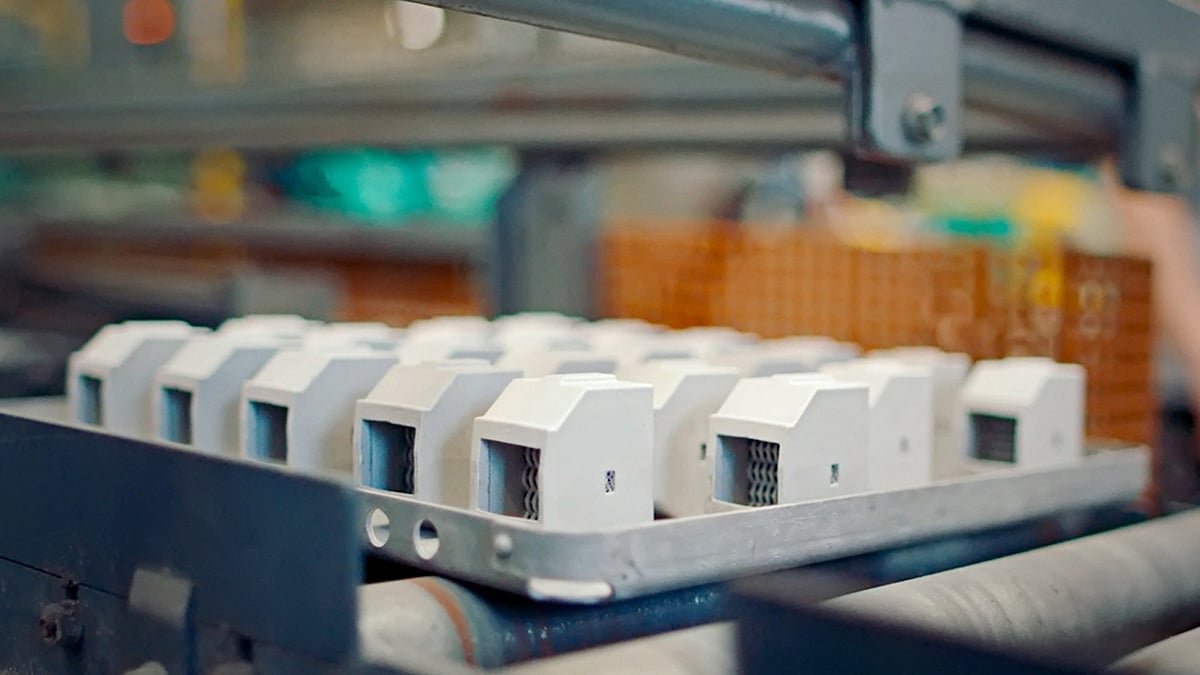
What is Metal Binder Jetting (MBJ)?
Binder jetting is a method of 3D printing that uses a liquid binding agent to bond powdered metal materials, layer by layer, to create solid, complex shapes. Whether metal, plastic, sand, or another powdered material, the core binder jetting process is the same.
As the build progresses, metal powder is deposited into the build chamber, then a roller spreads and slightly compacts a thin layer of powder over the build platform. A printhead with inkjet nozzles passes over the bed, selectively depositing millions of nanogram-sized droplets of a binding agent in the shape of a cross-section of the part. The binder bonds the powder particles together. When one layer is complete, the build platform moves down and the roller recoats the surface with more metal powder. The process then repeats, bonding the new layer to the layer below until the parts are complete.
Although the core elements of metal binder jet technology are the same across HP, Markforged, Desktop Metal, EasyMFG, and others, each has some unique (often patented) approaches to the internal mechanics, materials, and software that can make a difference in speed, part quality, east of use, and process efficiency.
Pros & Cons of MBJ
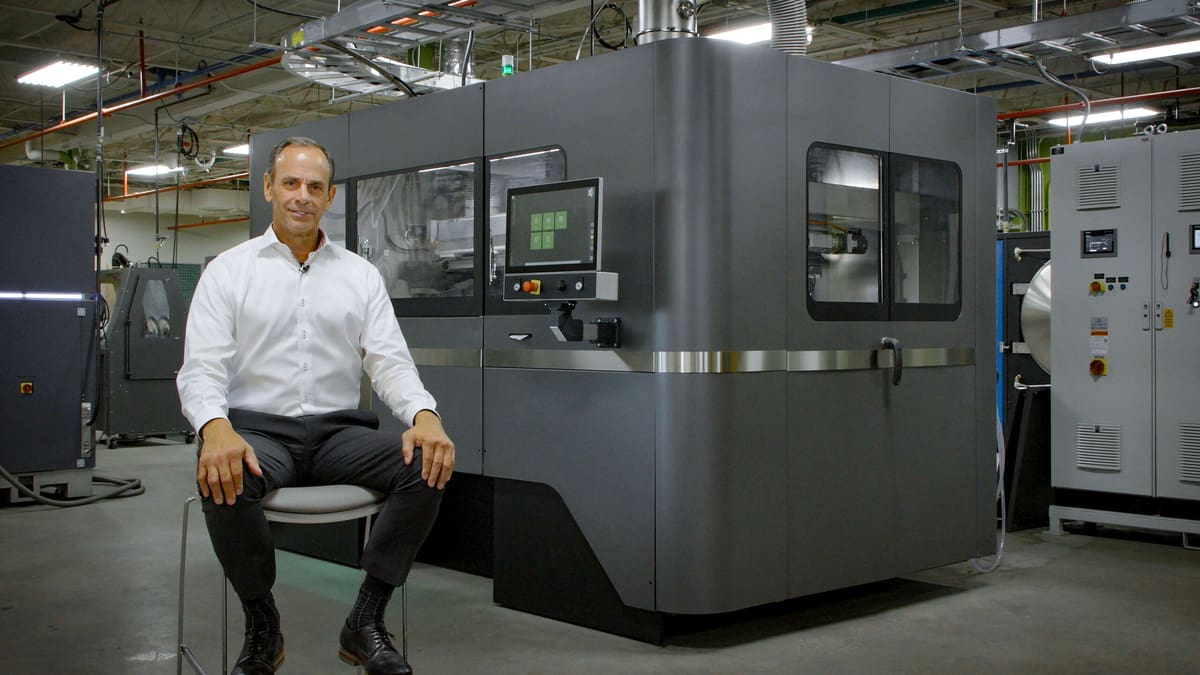
Referred to as MIM without mold, MBJ has several similarities to metal injection molding but doesn’ require any tooling. MBJ is also preferred to other forms of metal 3D printing, depending on your needs.
The technology especially shines when it comes to speed and throughput since printheads typically work faster than the lasers or electron beams used in other technologies. Plus, parts can be packed and stacked inside the build chamber, making use of nearly every centimeter of space. There’s also no specialty powders required, you can use the same metal powder used in metal injection molding technology.
Binder Jetting Pros:
- Vast Material Options: Binder jetting supports a broad range of powdered materials, potentially exceeding powder-bed fusion in applications and material variety. While theoretically compatible with any powdered metal and binder, metal binder jet 3D printers are typically limited to thoroughly tested materials with matching binders.
- Cheaper Material Options: Some metal binder jetting is carried out with the same commodity metal powders used in injection molding, which is more economical than the specialty powders mostly used in metal laser powder bed fusion 3D printing.
- Material Properties: Binder jetting operates at room temperature, avoiding laser-processing related defects such as high residual stresses, textured microstructures, or solidification cracking.
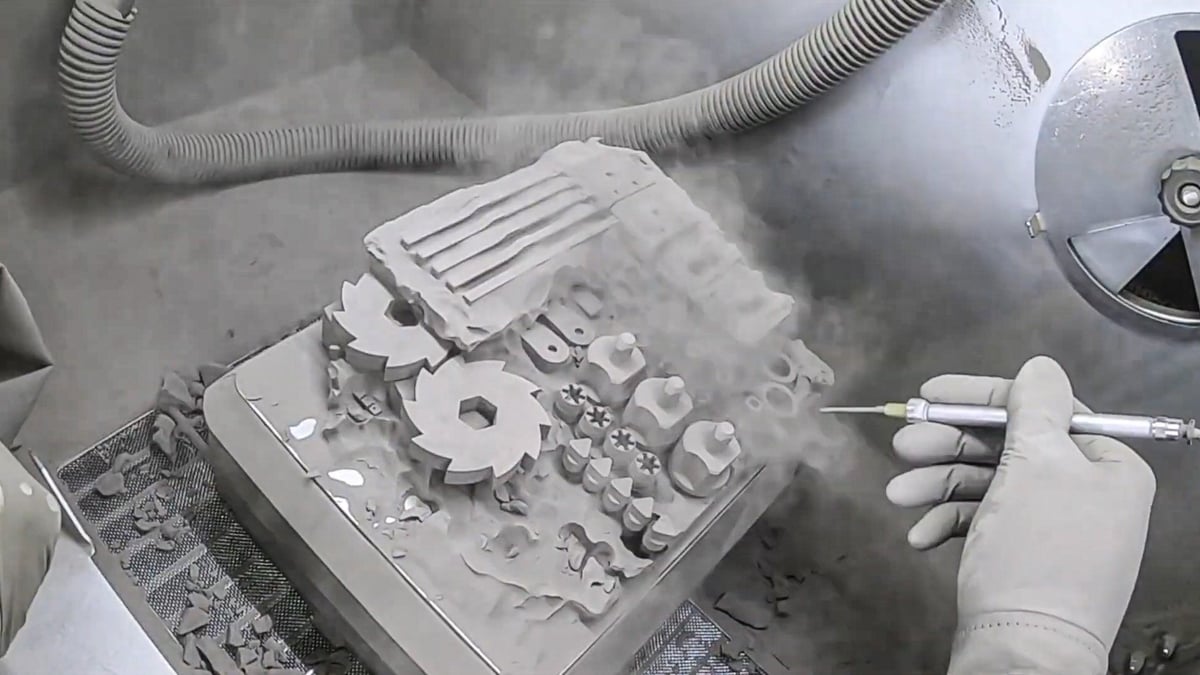
- High Volume Production: Although not the largest in build chamber size, binder jetting allows high-volume production by nesting various parts in a single build, making it ideal for service bureaus handling multiple customer orders.
- No (low) Supports: Binder jetting largely eliminates the need for support structures, as the powder bed usually supports the geometry. This allows for greater design flexibility, less material waste, reduced post-processing, and efficient part nesting, though some shapes may require support during sintering.
- High Speed: Binder jetting is faster than single-laser powder bed fusion, making it cost-effective for large production runs, though it isn’t the fastest among all laser powder bed fusion methods.
- Versatile Output: Binder jetting can achieve different densities and controlled porosity by adjusting sintering temperature and time, expanding its range of applications.
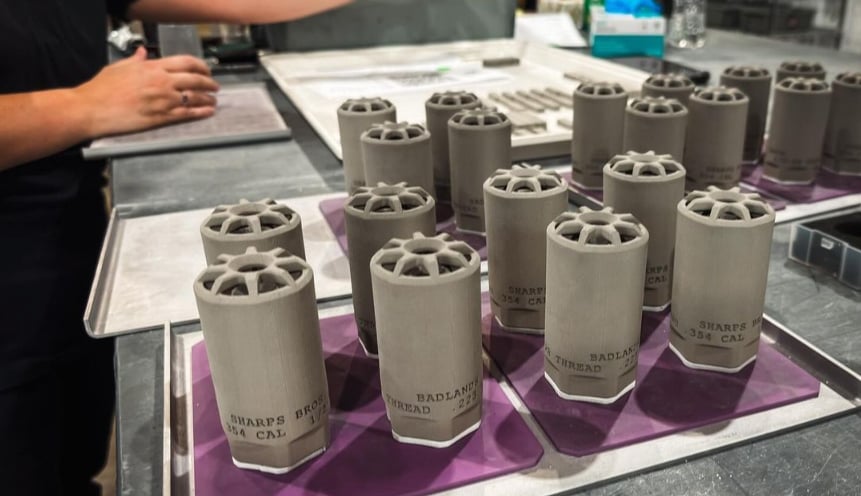
Binder Jetting Cons
- Multi-steps. Binder jetting is a multistep process requiring post-processing steps, which involves additional equipment.
- Distortion risks. The process of making the binder jetted parts more dense – sintering – can result in distortion of the geometry. However, this should be avoidable with proper calculations in advance, which are aided by the printer’s software.
- Manual labor. Moving parts from the printer to the post-processing machines and depowdering the printed parts is usually a manual process. Some depowdering automation is possible depending on the part geometry.
- Mechanical properties. This isn’t really a con at all since studies show binder jetting mechanical properties can be equal to casting, but it is not a replacement for forged metal. MJF parts do experience porosity, shrinkage, and low strength in some instances.
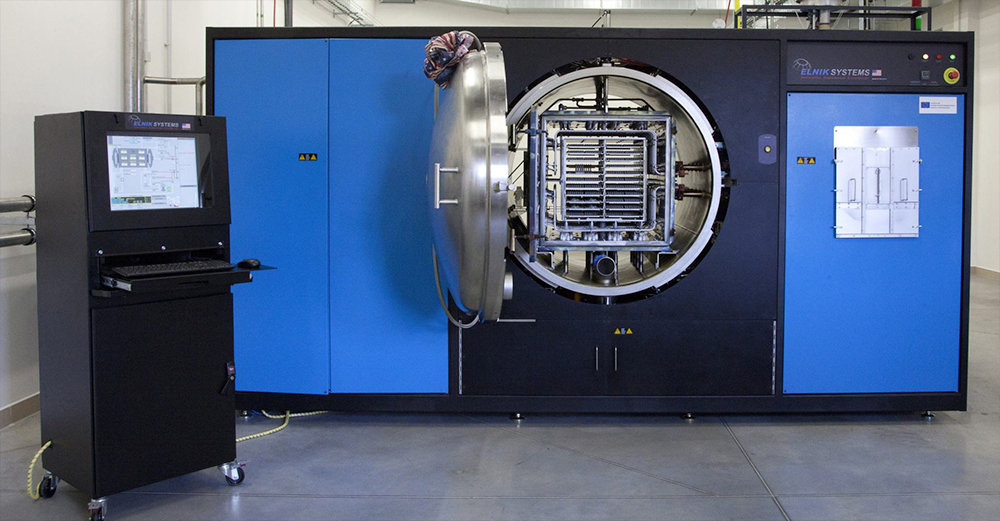
Despite its advantages, you won’t find many 3D printing services offering metal binder jetting because there aren’t that many machines options on the market. This technology is dominated by the three brands: Desktop Metal, HP, and Markforged, plus a new entry by Colibim Additive (formerly know as GE Additive) and French start-up Addimetal. Plus, unlike laser powder bed fusion, parts require post processing steps that require services to have furnaces and other hardware and consumables.
Metal Binder-Jetting-as-a-Service
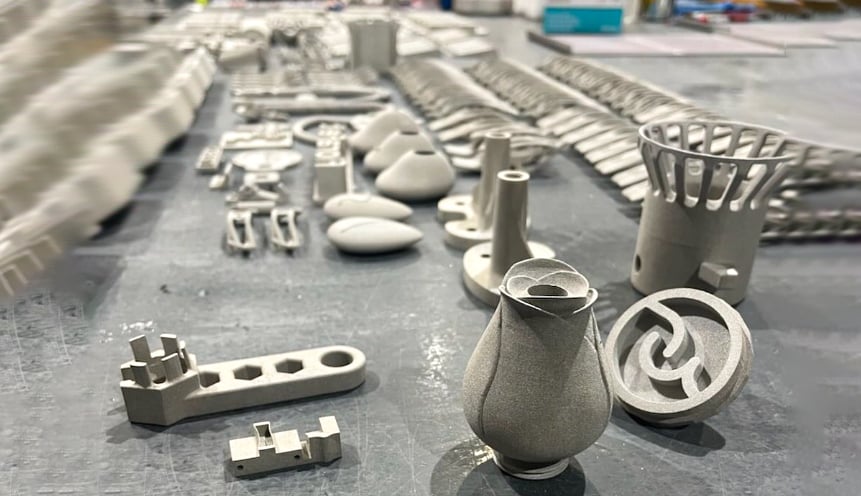
You don’t need to know anything about metal binder jetting or 3D printing to get your parts manufactured with this technology. Many service providers will walk you through the process, but the more you know about it, the better choices you can make.
If you’ve never 3D printed a part using metal binder jetting, there are some design points to consider when it comes to your digital part design files. The digital file that you use for other metal 3D printing technologies, e.g. laser powder bed fusion, may need to be adjusted to take into consideration MJB’s shrinkage factor.
Using binder jetting 3D printers results in a 15-20% shrinkage. You could leave these calculation to the 3D printing experts at the services below in hopes of achieving a net near shape part. However, if accuracy is a high priority for you, design your part in a computer aided design software that can calculate this shrinkage and simulate it, such as Autodesk’s Fusion.
When designing parts for metal binder jetting also consider wall thickness. Minimum wall thickness for an object
depending on build dimensions, but aim for a minimum wall thickness of 0.8 mm with supports or 1 mm without supports. Likewise, overhangs over about 25 mm must be designed to support their own weight.
Because of the post processing steps in metal binder jetting, you can’t achieve the knife-edge detail that you can with metal laser powder bed fusion.
Knife edges/pointed edges will fail during the depowdering process. Fillet all knife edges with a 1.00 mm (0.03 in.) radius to avoid breakage during depowdering. Edges that come to a point generally will be rounded in polishing. Overall, the minimum size of details such as lettering or holes is 0.8 mm.
Craftcloud
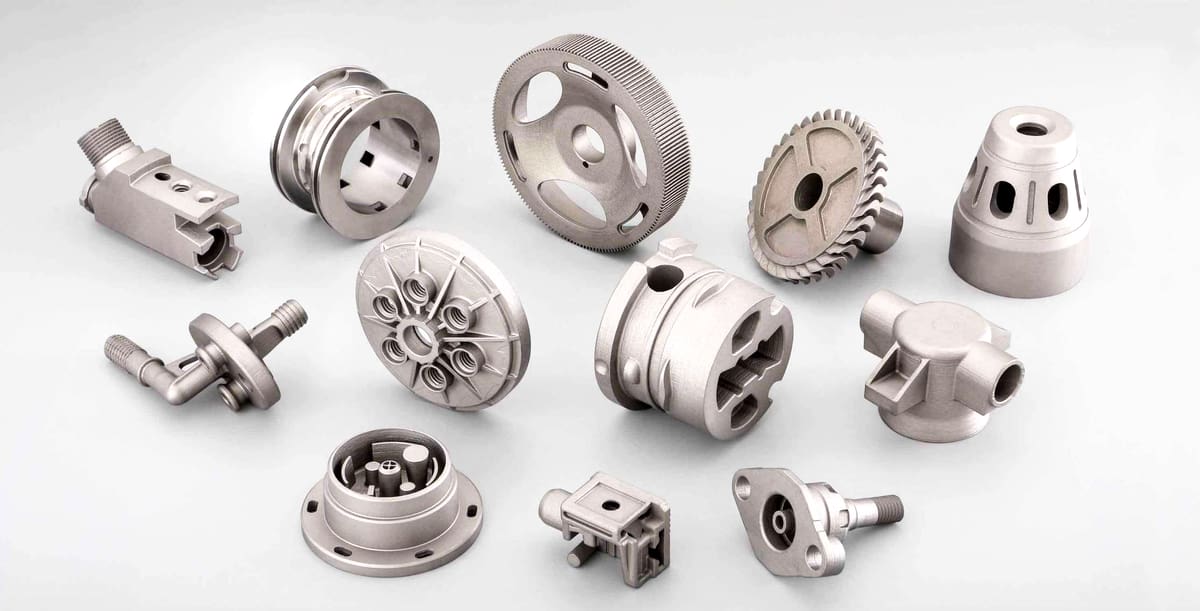
Craftcloud offers metal binder jetting in stainless steel 316L and 420/BR steel, which is steel infiltrated with bronze. The platform is more than a metal 3D printing service, it enables you to compare prices and services from different custom manufacturers around the globe and find the right one at the right price.
Craftcloud has several metal binder jetting manufacturing partners and presents you with quotes generated in real-time based on your uploaded models and location. Using the platform is as simple as any other 3D printing service, but with many more options available. Craftcloud doesn’t hide who is actually producing your part, but you’re not handed over to them for customer service, Craftcloud manages everything from ordering to delivery to your final satisfaction with your parts.
GKN Forecast 3D
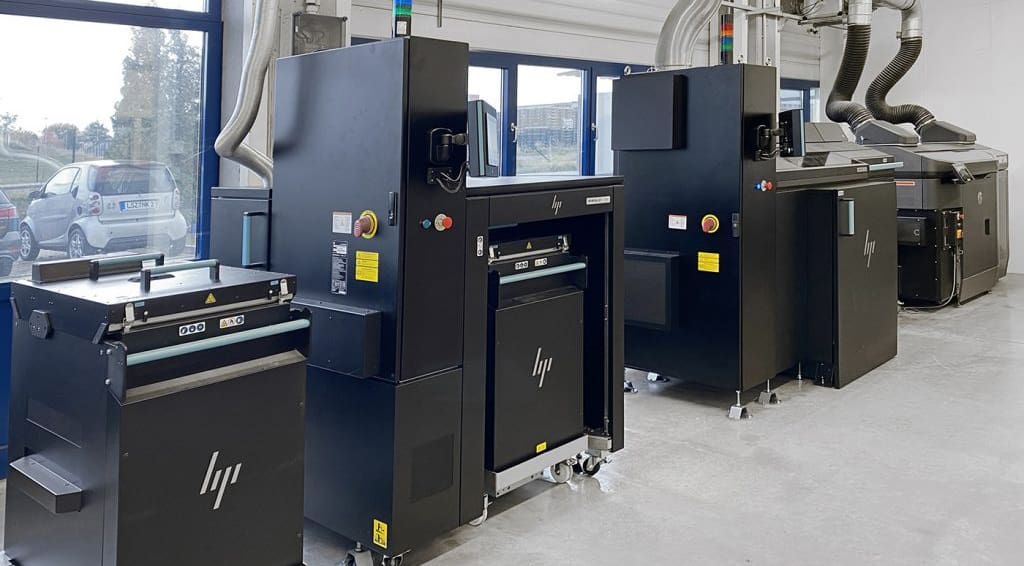
The longtime partnership between GKN Forecast 3D and HP, which makes a metal binder jetting technology called Metal Jet, has led to the industrialization of binder additive manufacturing for serial production at Forecast 3D.
GKN Additive, which owns US-based Forecast 3D, was one of the first companies to integrate the Metal Jet at their facilities for parts production. The strength of GKN Additive is its expertise in metal materials and the specific metals that are and can be 3D printed. If you’re not sure which metal you need or you know your application may require a custom material, GKN has the expertise to share.
GKN has produced serial metal binder jetting parts for Schneider Electric, mentioned above.
Materials offered in binder jetting at GKN Forecast 3D include 316L stainless steel.
Sculpteo
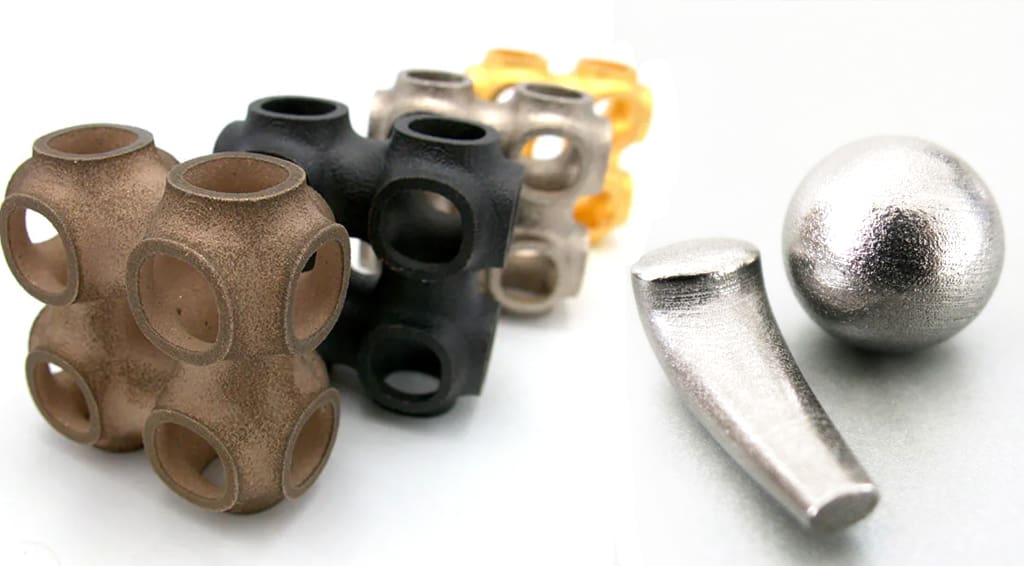
Sculpteo, a Craftcloud partner, has been in business since 2009 and is one of the biggest names in 3D printing services. It enables users to upload 3D designs, choose from a range of materials (like plastics, metals, and resins), and select various finishing options to customize their products.
The service added metal binder jetting to its menu 2017 with the purchase of MBJ machines from ExOne, now Desktop Metal. It’s unknown if those are still the company’s go-to MBJ solution but it does caution that “since Metal Binder Jetting has average mechanical properties, it is more suited to decorative objects and jewelry than technical parts.”
For materials, the company offers a steel bronze (420SS/BR) material, which is stainless steel infiltrated with bronze material to add strength and resistance to the object. At the end, the material is composed of a base of 60% stainless steel material and 40% bronze material. Sculpteo says it has relatively good mechanical properties thanks to the infiltration process. Unpolished and unplated, the material has a light brown color and a granular surface. Several finishing options are available and, you can obtain nickel and gold plated colors as well as a polished surface.
FreeForm Technologies
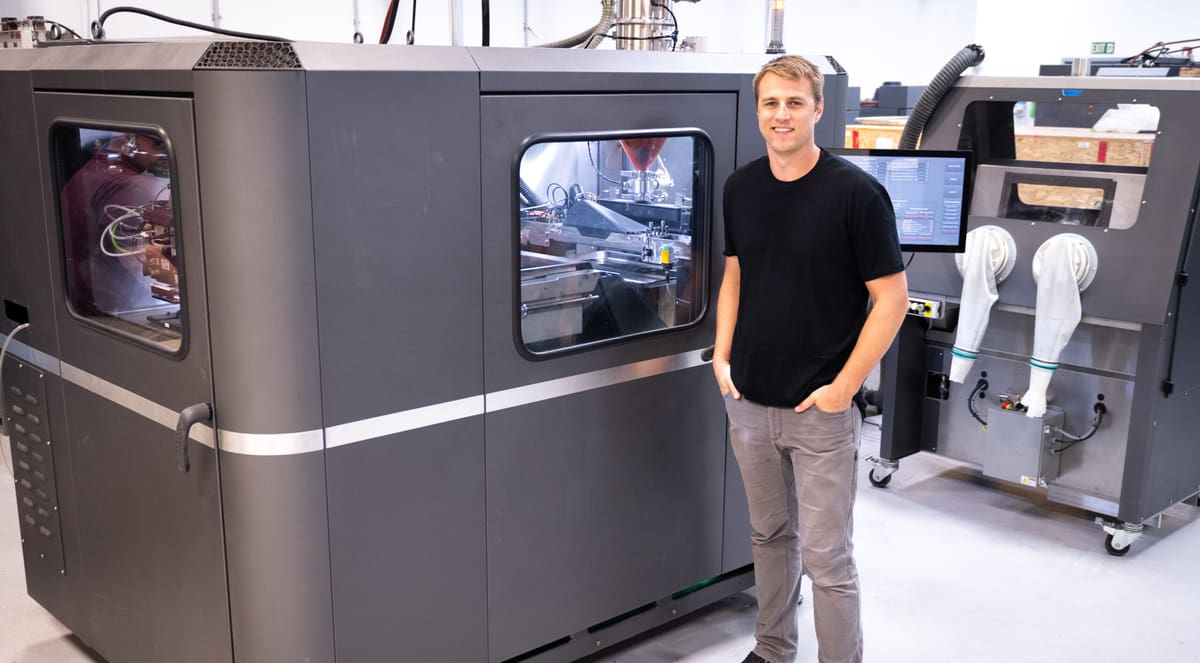
FreeForm Technologies, a St Marys, Penn.-based contract manufacturer, owns the world’s largest fleet (25) of Desktop Metal MBJ 3D printers, according to a Desktop Metal press release in 2023.
FreeForm was founded in 2020 with the aim to bring “creativity and freedom of design direct to manufacturing with the ability to run parts from prototypes thru mass production.”
FreeFORM offers metal binder jet 3D printing, metal FFF printing, metal injection molding, plastic FDM, and SLA contract manufacturing services. It also offer generative design, design for manufacturing, and FEA services.
Indo-MIM
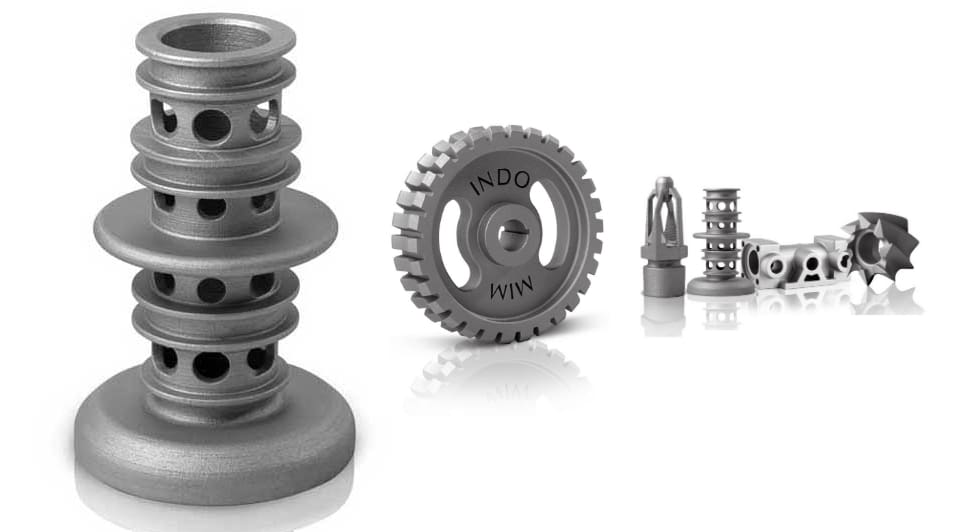
Metal injection molding (MIM) service providers, like Indo-MIM, a Craftcloud partner, with locations in India and Texas, are increasingly adopting metal binder jetting 3D printing do to is many similarities to MIM. It can use the same metal powder and binders, and it requires the same post-process sintering. Plus, there’s no upfront tooling and customers can have sample parts within days.
Indo-MIM has four HP Metal Jet printers at its Bangalore, India, location and three HP binder jet printers at its San Antonio, Texas. “Our production-ready HP printers can take up volumes of 5,000 to 50,000 pcs/year depending on the component size,” the company says.
Indo-MIM offes 17-4PH stainless steel and says it developed its own tool steel M2 grade material that is uses to binder jet more than 800 mold inserts for its own metal injection molding operation.
Azoth 3D
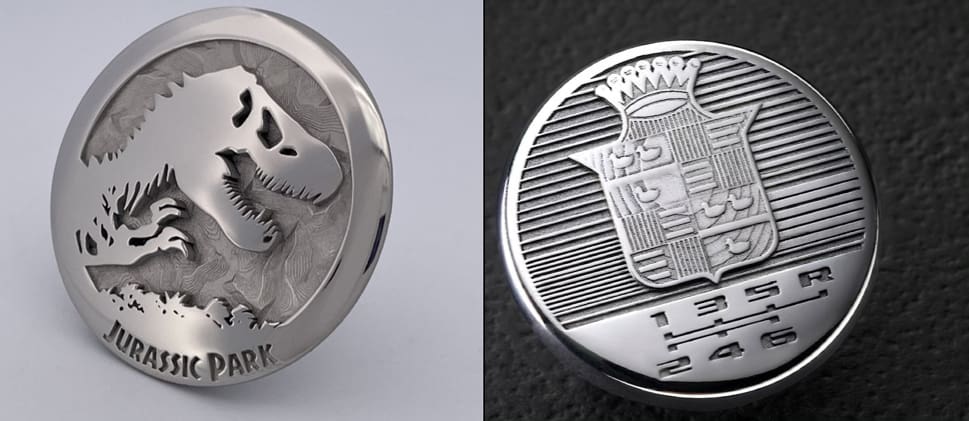
Azoth 3D is a 3D printing company based in Ann Arbor, Mich., that focuses on using additive manufacturing technologies to produce “complex, durable components on demand, reducing the need for excess inventory and minimizing lead times,” the company says.
Azoth leverage various additive manufacturing technologies, including metal binder jetting and polymer-based processes, to create parts with precision suitable for industries like automotive, aerospace, and healthcare. Azoth’s services also include material consultation, prototyping, and part design optimization for additive manufacturing.
Azoth aims to make the MBJ process more accessible by enabling you to upload your CAD file and blueprint (if available) where engineer with binder jetting expertise will evaluate your product and provide a quote within 24 hours.
DSB Technologies
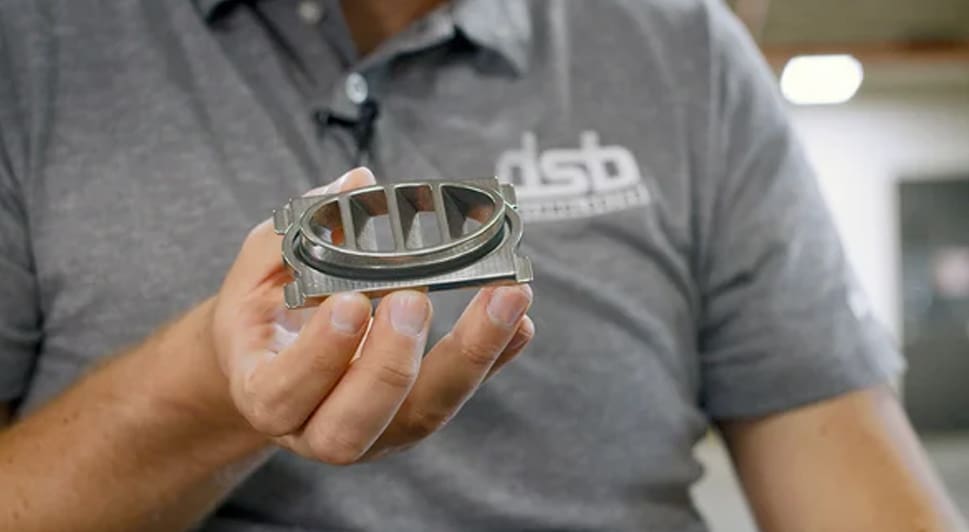
DSB Technologies, a contract manufacturer Janesville, Wis. that specializes in metal injection molding, adopted Desktop Metal’s complete X-Series metal binder jetting platform in 2023 to offer customers prototypes and series production.
On its website, the company touts MJB’s speed over MIM: “In a race to the market, speed wins. Create and iterate metal parts with nearly limitless design freedom in four weeks or less with DSB’s metal binder jetting prototyping.”
Like other MIM service providers, adding MJB to the lineup enabled DSB to make the most of their existing materials and post-processing equipment. The company also offers design services to help customers redesign their MIM parts to achieve lightweighting and improved functionality when switching to MBJ.
Xometry
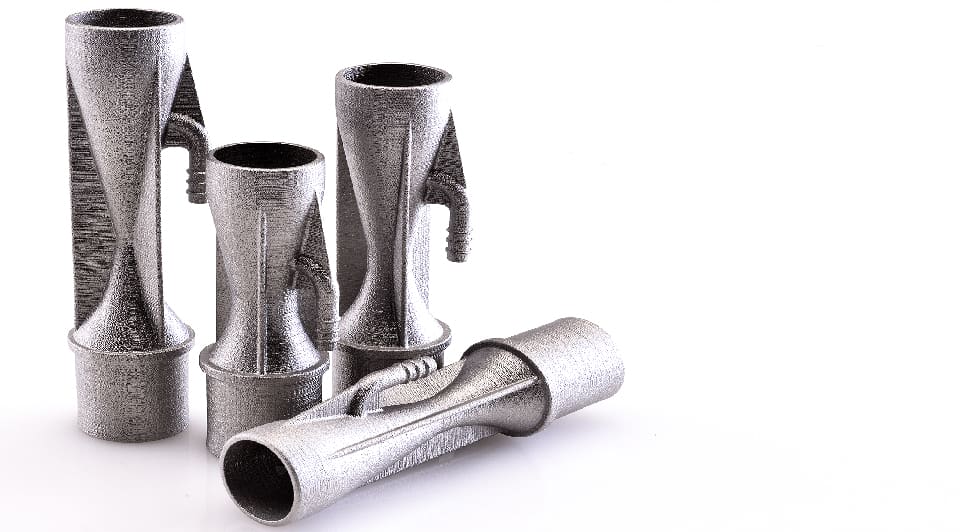
Xometry has become one of the world’s largest online 3D printing service, relying on a nationwide network of manufacturing partners. It provides instant quotes for many projects filtered by production method, material, and lead time. Beyond 3D printing, Xometry offers a wide range of pro-manufacturing services like CNC machining, sheet metal parts, injection molding, supply-chain solutions, and services you need for high-volume production.
When it comes to 3D printing metal parts with binder jetting, Xometry added ExOne (now known as Desktop Metal) 3D printers back in 2021. The service offers MBJ parts in two stainless steel-bronze alloys (X1 Metal 420i) and a more pure stainless steel 316L.
Composite steel-bronze parts will be bronze-silver on wear points. This can be enhanced or occluded, depending on finishing options such as media blasting, heat patinas, and vibratory media tumbling. Xometry offers six finishes for X1 Metal 420i and 316i: Zirblast (Standard), tumble polished, medieval pewter, damascus steel, antique bronze, wheat penny.
Using the service is straightforward, but registration is mandatory to get a quote from Xometry.
License: The text of "8 Metal Binder Jetting 3D Printing Services We Recommend" by All3DP Pro is licensed under a Creative Commons Attribution 4.0 International License.
